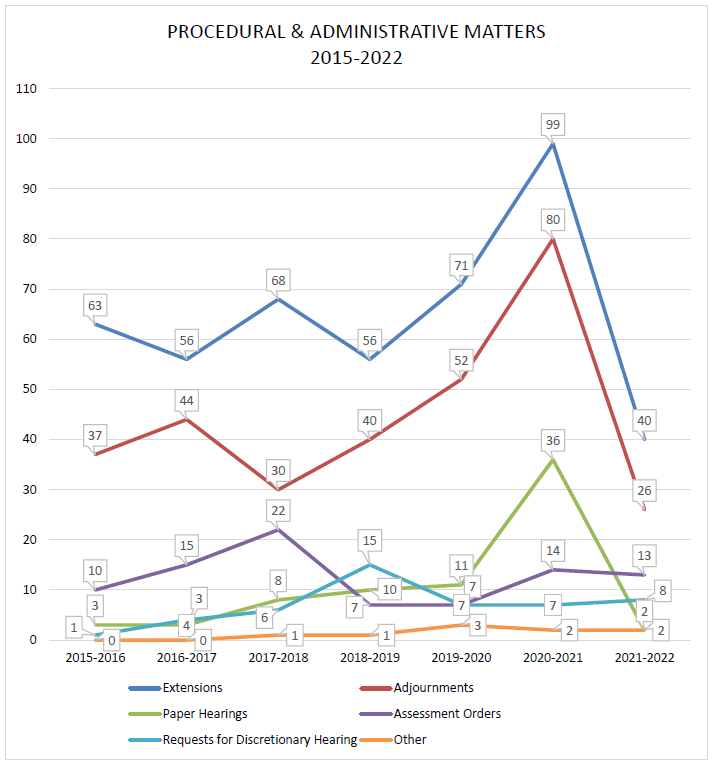Number of Accused
The total number of accused under the Board’s jurisdiction has declined over the last four years. There are slightly more accused in custody at the Forensic Psychiatric Hospital than under supervision in the community.
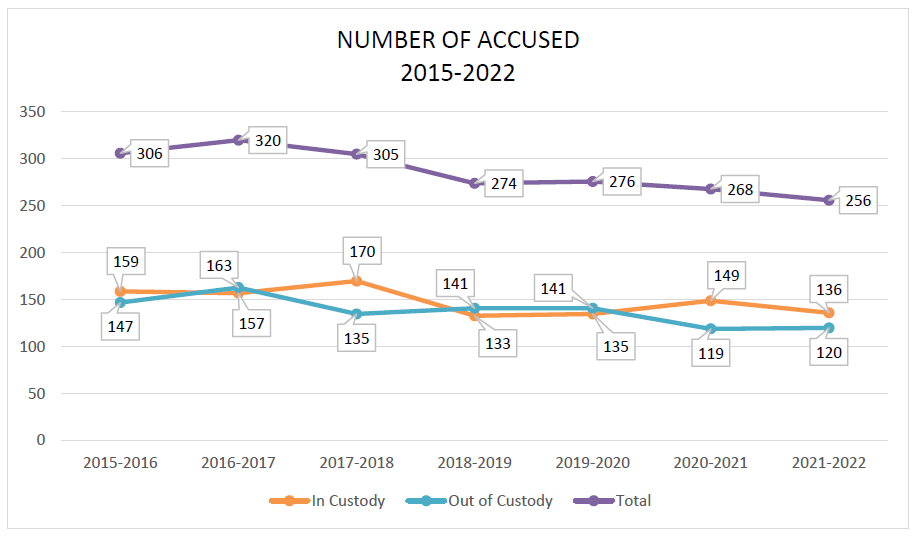
Breakdown of New Cases
New cases that are deferred by the court to the Board include both not criminally responsible (NCR) accused, as well as accused who have been found unfit to stand trial (UST). In the past year, new cases have continued to decrease. This can likely be attributed to the ongoing impact of the COVID-19 pandemic on court operations throughout the province. Last year the number of new UST findings from court outnumbered the new NCR verdicts. This year that has reversed to the usual pattern of more NCR cases than UST, although at a significantly lower level of new NCR cases.
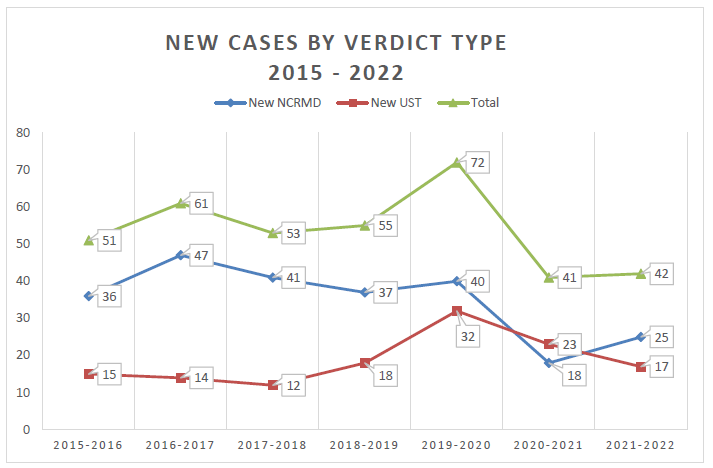
Case Closure by Reason
This graph indicates that the main reasons for case closure are absolute discharge (in the case of NCR accused) or matters where an unfit accused has been returned to court, and subsequently found to be fit. Besides these, a case may be closed due to death, interprovincial transfer, charges being stayed, an appeal, or a “consolidated verdict”.
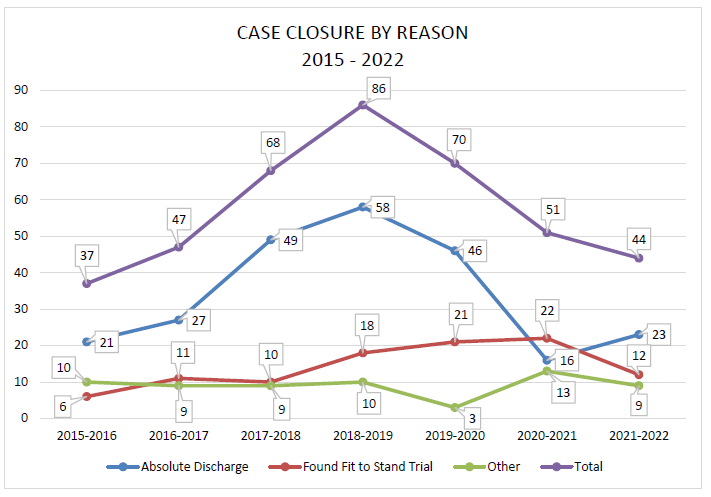
New and Closed Cases
This graph shows the new NCR accused, as well as cases that have been closed as a result of an absolute discharge. As mentioned, the new NCR cases coming into the BCRB continued to be reduced in 2021-22 due to the COVID-19 pandemic, although were increased from the notable lows of the previous year. The number of absolute discharges increased at a similar rate to the number of new NCR cases this year. The impact of dramatically reduced community access and access to civil mental health services for accused persons during the pandemic continues to be reflected in these numbers.
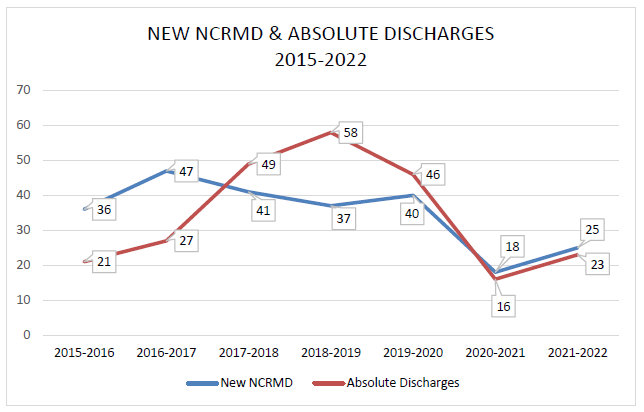
The next graph shows the number of new unfit accused, as well as the number of accused where the Board was of the opinion that the accused was fit to stand trial and ordered the accused to be sent back to court for trial of the issue. Although there were fewer new unfit accused in 2021-22 than in the previous year, the number was still higher than in prior years. The number of accused returned to court has decreased significantly compared to the previous 3 years.
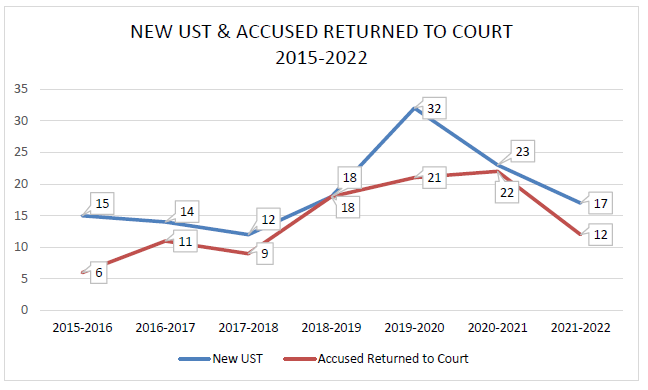
Total Accused by Verdict Type
This graph tracks the total accused under the Board’s jurisdiction, broken down by verdict type. The NCRMD and historical (pre-1992) not guilty by reason of insanity (NGRI) verdicts have been combined.
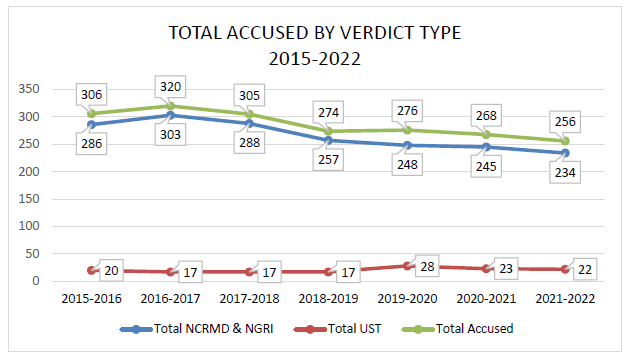
Total Hearings by Type
This chart shows the total number of hearings in a year, as well as the breakdown by type. Although the majority of hearings are held annually, in some cases the Board orders that the next hearing be prior to the normal 12 months (known as short orders). Additional hearings are also held where the accused’s liberty has been restricted by the Director for more than seven days, or where the court has ordered that an accused be returned to custody for breach of their release conditions. Early hearings may also be held at the request of the Director, or in the discretion of the Board. This means that the total number of hearings is often more than the total number of accused under the Board’s jurisdiction.
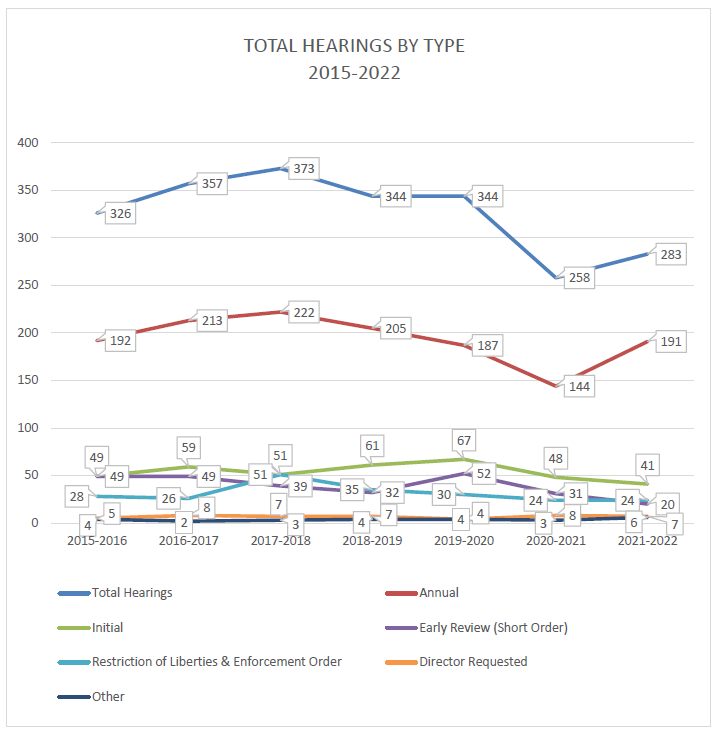
Dispositions and Cases
This graph depicts the number of dispositions (hearings and extensions) versus the number of cases under Review Board jurisdiction. The number of cases is made up of the number of accused persons under Board jurisdiction at the end of 2020-21 and the number of new accused deferred by the court to the Board in 2021-22. Because cases are sometimes reviewed more than once per year, the total case number is not an accurate reflection of workload.
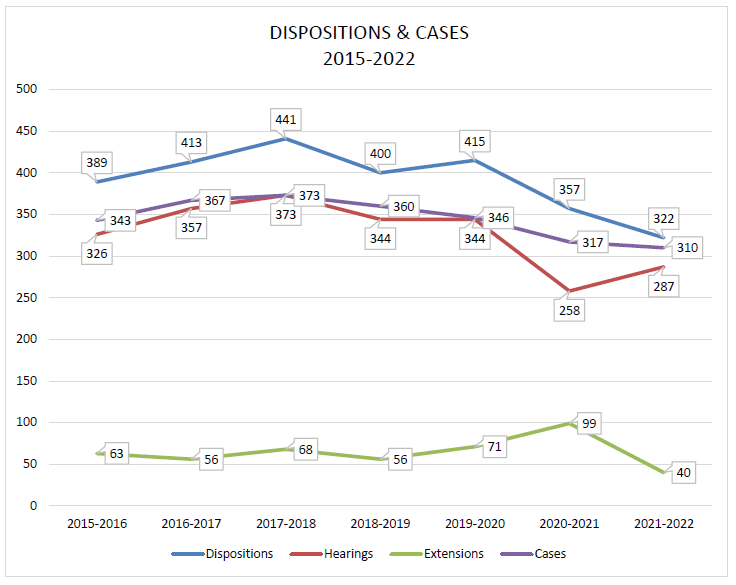
Accused Demographic Breakdown
The demographic breakdown of Review Board accused has remained relatively stable over the last five years. Most accused under the Board’s jurisdiction are male, over 18, and live in the Lower Mainland. A new demographic measure has been added this year, showing that 5% of accused require an interpreter present at hearings.
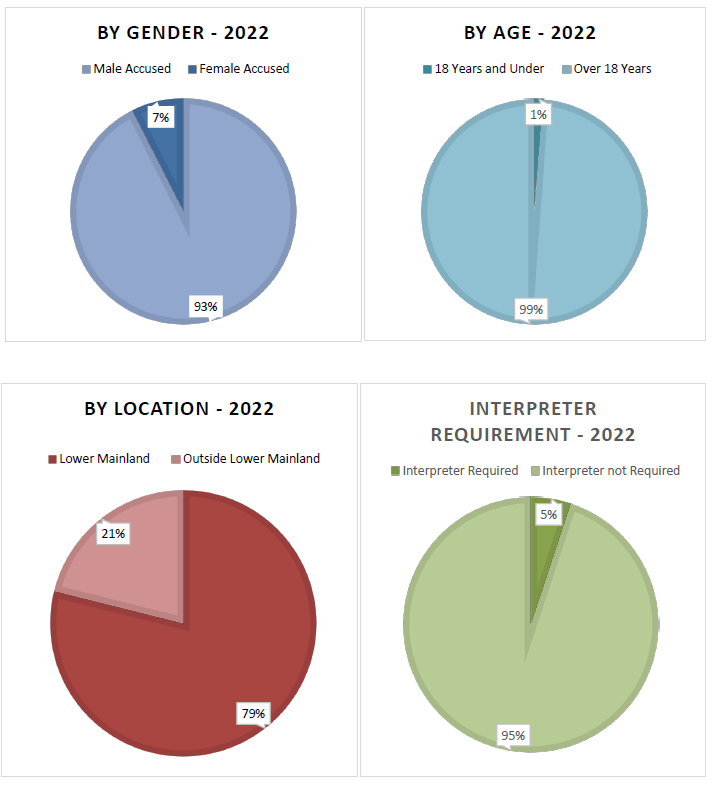
Hearing Method
This chart shows the breakdown of hearing method for 2015-22. The majority of hearings were held by video due to the COVID-19 pandemic, with some held in-person or by paper. A ‘paper’ hearing may be held in the absence of parties where all parties agree on the order and conditions. A panel reviews all the evidence and makes their decision based on the usual standards. While more hearings were conducted by paper in early 2020 while the Board adjusted to the pandemic, these hearings returned to their normal level by 2021-22.
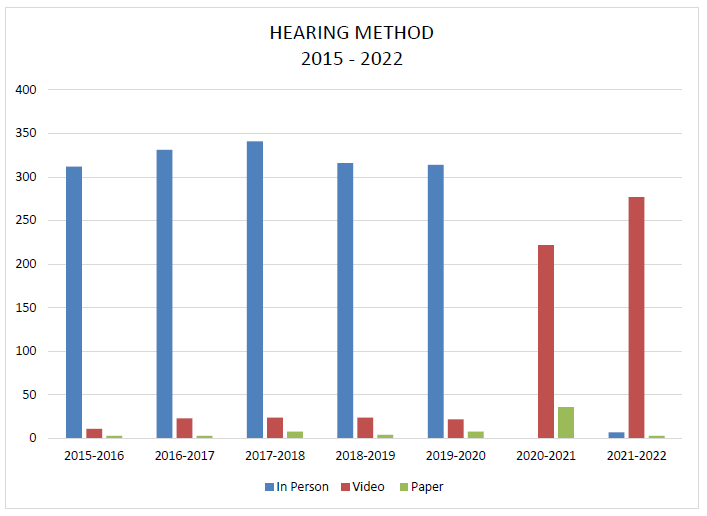
Procedural and Administrative Matters
This chart shows the breakdown of procedural and administrative matters for 2015-22. These are an indication of additional workload outside of the regular hearing process. This year saw considerably lower numbers of extensions, adjournments and paper hearings compared to last year. This is unsurprising as many hearings were delayed or dealt with by these methods during 2020 due to the COVID-19 pandemic. The ‘Other’ category includes recommendations to the court for a stay of proceedings, victim requests to read VIS, and 672.48(3) returns to court.
